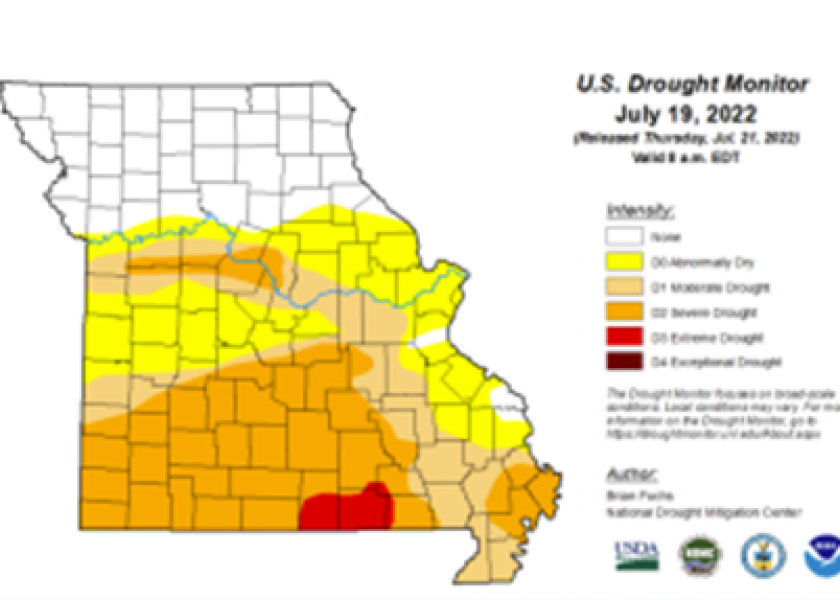Missouri Governor Issues Executive Order for Drought Assistance

In response to increasingly dry conditions and the growing threat of serious drought, Missouri Governor Mike Parson issued Executive Order 22-04 calling upon the Missouri Department of Natural Resources to activate the Drought Assessment Committee and the associated drought impact teams.
“I know on my farm that conditions have deteriorated quickly, and we are hearing the same reports from countless other farm and ranch families across the state,” Governor Parson said. “By responding now, early in this drought, we can greatly reduce the impact on our agricultural community and Missouri citizens. Our farmers are a critical resource for our state, and it is important that we assist them as much as possible through this difficult time.”
Governor Parson has directed all state agencies to examine how they may assist affected communities, as well as those communities that may be affected in the future, through temporary suspension of administrative rules, appropriation, or other means of support to mitigate the effects of drought conditions. Missouri Cattlemen's Association Executive Vice President Mike Deering applauds the Governor for his rapid response.
"Our association and other organizations met with the governor on Monday, July 18, and we expressed the need to get on top of this issue now instead of waiting for conditions to worsen. A proactive response is critical as drought hits many cattle producing counties," said Deering. "We applaud Governor Parson for acting immediately to engage all applicable state agencies in this effort."
Additionally, Governor Parson has proactively directed the departments of Natural Resources and Conservation to create a process for allowing farmers water access at state parks and conservation areas. The Department of Natural Resources will also assess state park areas that can be made available for haying. The Missouri Department of Transportation will offer special over-width hauling permits, which waive certain fees and restrictions to farmers and ranchers moving hay.
The Executive Order declares a drought alert for 53 counties in southern and central Missouri, primarily counties south of the Missouri River. A drought alert, part of Missouri’s Drought Plan, is the initial catalyst that allows the Governor to direct state agencies to work together and provide as many resources and as much assistance as possible.
“Drought conditions in many parts of Missouri compound the challenges producers are already facing with high fuel prices and input costs,” Missouri Department of Agriculture Director Chris Chinn said. “Livestock producers are having to make difficult decisions about selling livestock because there is no pasture in many areas. Grain farmers are watching their crops wither before pollination. Conditions are difficult for many Missouri farmers and ranchers.”
In accordance with Missouri’s Drought Plan, the Department of Natural Resources has been engaging partners to assess emerging drought conditions for several weeks. In a fast-moving drought, local condition reports are crucial to understanding impacts to provide timely and appropriate assistance.
Citizens can submit information about local drought conditions at Condition Monitoring Observer Reports (CMOR). A variety of helpful resources are online at www.dnr.mo.gov/drought. The Department of Natural Resources is adding information on drought mitigation and assistance opportunities daily as it becomes available. The one-stop drought website features a link to CMOR, current drought-related news, the current United States and Missouri drought maps, the Missouri Drought Plan, and other resources, including information on previous droughts.







